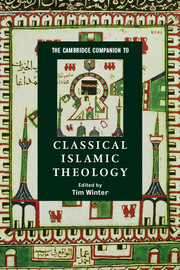5 - The social construction of orthodoxy
from Part I: - Historical perspectives
Published online by Cambridge University Press: 28 June 2008
Summary
Orthodoxy as a social phenomenon is not a “thing” but rather a process. For theological doctrines to become established as orthodox, they must find a place in the constantly changing net of social relations and institutions that constitute society. This is a two-way process: ideas can reconfigure these relations and institutions, but the social context also actively receives ideas and promotes, channels and/or suppresses them. Thus the history of orthodoxy cannot be simply a history of ideas, but a history of how, in particular situations, claims to truth came to be enshrined in social practices, such as rituals, and in institutions, such as the “community of scholars”.
This chapter seeks to provide an overview of the social and institutional environment in which discourses of orthodoxy in Islamic theology were formed, propagated and resisted between the ninth and nineteenth centuries CE. In each of the disciplines which touched upon the realm of theology, scholars ('ulame') were socialised into a specific culture of learning, with established modes of inquiry and standards of authenticity. Within these parameters, they developed and defended notions of orthodoxy and sought to marginalise those they defined as heretics, sometimes by drawing on executive power or the muscle of the mob. The government, in turn, employed its coercive potential to influence the definition of theological orthodoxy in order to defuse perceived threats to social order, often by means of its executive prerogatives (especially the appointment of judges and other authorities), and occasionally through the outright persecution of those whose unorthodoxy was deemed too dangerous. Finally, ordinary believers were not passive recipients of ideals of orthodoxy proffered by scholars and rulers: they were actively engaged in evaluating, propagating and forging beliefs and rituals that contributed substantially to the construction of orthodoxy in any given time or place.
- Type
- Chapter
- Information
- The Cambridge Companion to Classical Islamic Theology , pp. 97 - 118Publisher: Cambridge University PressPrint publication year: 2008
- 14
- Cited by

